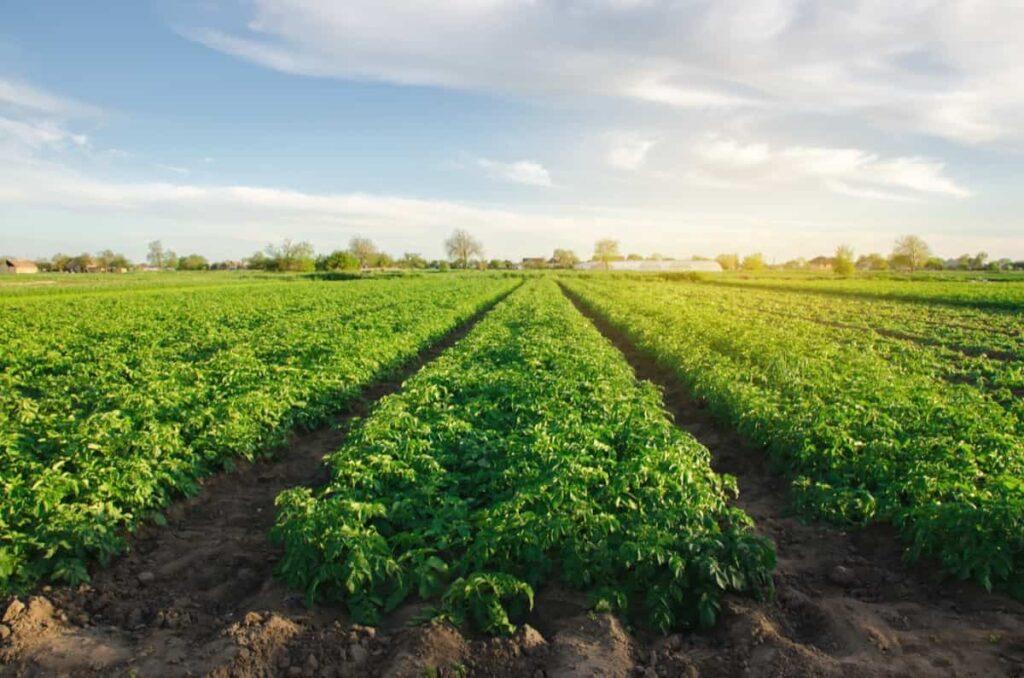
Calcium (Ca) – An Important Nutrient for Marketable Quality of Potatoes
One nutrient that is crucial for plants is Calcium. The basic existence of plants and animals depends on calcium, which is present all around us. One of the nutrients that is most important to plant growth but is less noticeable is calcium. All too frequently, it is neglected as plans for improving soil fertility are created for numerous high-yield, high-quality crops. Learn why it’s never a good idea to overlook this overlooked secondary vitamin.
Calcium’s Functions –
In Soils –
When limestone is added to soil to reduce its acidity, calcium takes the place of hydrogen (H) ions on the surface of the soil particles. It is necessary for microbes to release nutrients, increase soil aggregation and water-holding capacity and convert crop wastes into organic matter.
Calcium facilitates the uptake of atmospheric nitrogen gas by nitrogen-fixing bacteria, which creates nodules on the roots of leguminous plants and transforms it into a form that plants can utilize.
In Plants –
Organic acids are produced by plant cell metabolism and are neutralized by calcium, magnesium and potassium. Ca is absorbed by plants as the Ca2+ cation. Once inside the plant, calcium performs a number of vital roles, including –
- Improves the absorption of other nutrients by roots and their translocation within the plant
- Calcium is known to act like a hormone, thus regulating many growth and developmental processes in plants
- Helps to convert nitrate-nitrogen into forms needed for protein formation
- Is needed for cell wall formation and normal cell division
- Improves disease resistance
Calcium Deficiencies and Management –
Most crops are unlikely to experience a calcium deficiency if the soil is properly treated with lime to bring the pH levels to ideal ranges for crop growth. Rather than a lack of calcium, harmful soil concentrations of aluminum and/or manganese frequently limit crop growth if soils become more acidic. The best management practices (BMPs) for preventing these issues are soil testing and an effective liming program.
By adhering to numerous BMPs, such as routine soil testing and correcting soil acidity with appropriate liming, calcium insufficiency can be avoided. Maintain a balanced supply of calcium, potassium and magnesium to maintain the balance of the plant nutrition program. A shortage or intake (antagonism) of one can result from an oversupply of another. Apply calcium as well for particular plant purposes.
- Calcium deficiencies are most likely to occur in acid, sandy soils from which calcium has been leached by rain or irrigation water. It may also occur in strongly acid peat and muck soils where total calcium is low.
- Leaf tips may stick together and new leaf growth may slow. Keep in mind that calcium does not translocate across the plant easily, thus deficiencies will show up on new growth.
- Slow growth of the roots. In extreme circumstances, the growing tip may perish and the roots may turn dark.
Calcium and Potatoes –
Enhancing the quality of potatoes is directly impacted by calcium. A sufficient amount of calcium in potato tubers can reduce a number of quality problems, including internal browning, hollow heart and internal rust spot (IRS). Furthermore, calcium reduces the chance of contusions and illnesses that develop after harvest.
The building of a strong structure and the maintenance of cell stability are made possible by the presence of calcium in cell walls. Calcium-enriched cell walls are more resistant to bacterial or fungal invasion. Due to its importance during cell division and expansion, it is required prior to and during the rapid development phase of tubers.
It does not take much calcium to grow potatoes. The calcium-related problems with potato quality are caused by tiny local deficits, but depending on how much of the tuber is affected, these shortages may make crops unsellable.
Advantages of Potatoes when Applied with Calcium –
Calcium enhanced the seed pieces’ quality and led to healthier sprouts (stronger plants). The growing sprout from the seed tuber gets calcium from the seed tuber prior to the formation of the root system. The sprout tip may be damaged by a calcium shortage in the seed tuber, which will lead to the growth of side branches and an increase in the number of stems. Tuber set would increase and tuber size would decrease as a result. Other qualities and advantages of calcium after harvest include –
- Reduced incidences of internal deformities, such as hollow hearts, brown patches and black spot bruises
- Decreased occurrences of storage rot
- Ca reduces the risk of internal tuber heat necrosis and also diminished effect of heat and cold stresses on plants
Sources:
www.cropnutrition.com
horticulture.wisc.edu
